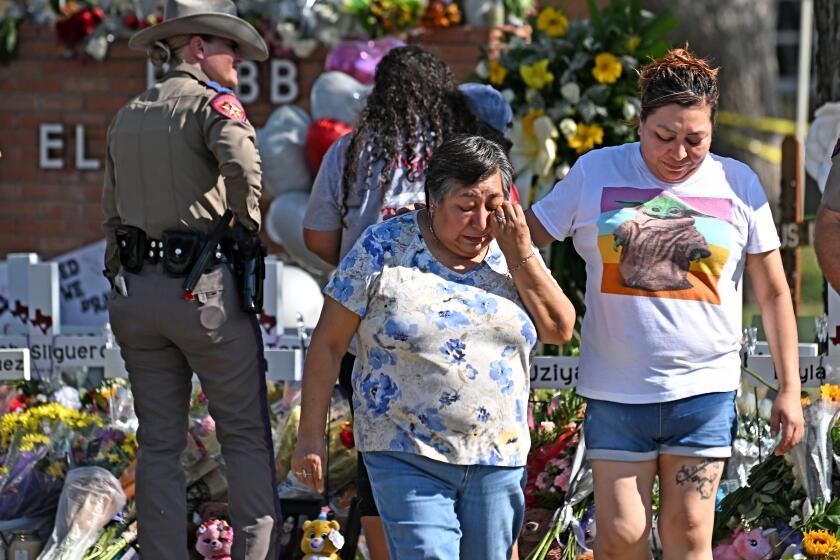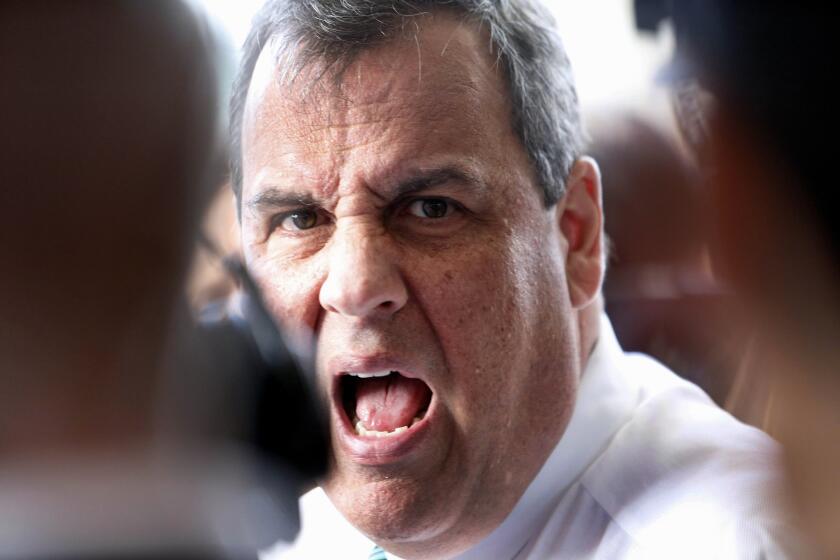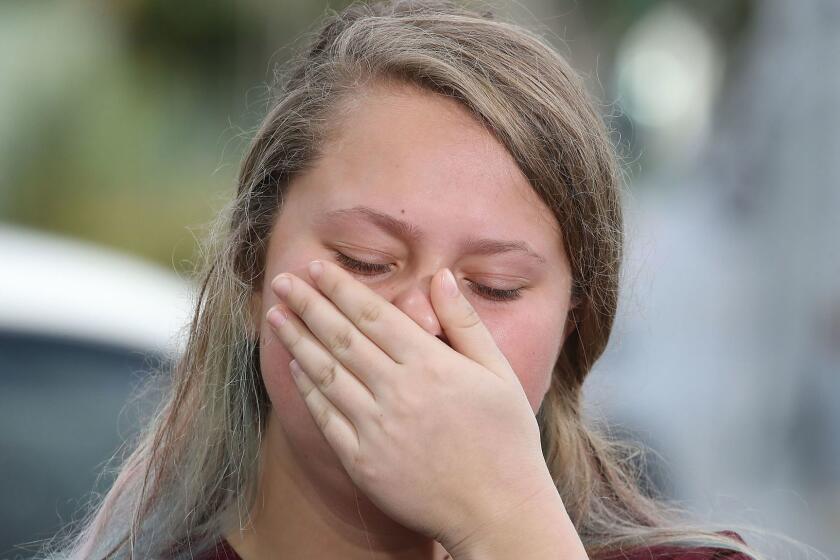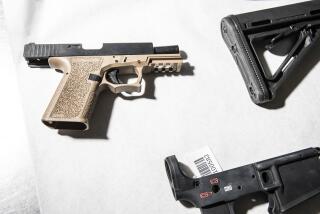California’s tough gun laws have made the state safer than the rest of the country

- Share via
The most predictable response by the gun lobby and its political mouthpieces to calls for stricter gun laws in the wake of mass shootings is that tough laws don’t work.
You’ve probably heard all the arguments: That we already have tough laws on the books, that the problem is they aren’t enforced. Or that the legislation most often proposed wouldn’t have stopped the latest perpetrator of the latest gun-related horror, such as Uvalde gunman Salvador Ramos.
None of that is true, and California, which has some of the strictest gun laws in the nation, is the proof.
America has drunk the Kool-Aid that says your home is safer with a gun in it than without it.
— Garen Wintemute, UC Davis
As we’ve reported before, statistics from the Centers for Disease Control and Prevention show that overall firearm deaths in California, at 8.5 per 100,000 population in 2020, easily bests the rates in states with lax controls, such as Texas (14.2 per 100,000) and Louisiana (26.3).
The disparity is especially sharp when it comes to firearm deaths of those under 18. California’s rate is about half that of the national average, less than half that of Texas, and only about one-fourth that of Louisiana.
Get the latest from Michael Hiltzik
Commentary on economics and more from a Pulitzer Prize winner.
You may occasionally receive promotional content from the Los Angeles Times.
It’s true that California has not been immune from the national epidemic of mass shootings. But its laws have had a measurable, positive impact. “California has not solved the problem of mass shootings,” says Ari Freilich, state policy director at the gun safety organization Giffords. “But California children are half as likely to be shot.”
Let’s examine the key elements of California’s laws, and how they might have interfered with the latest major gun-related outrages — the killings of 19 children and two adults at Robb Elementary School in Uvalde, Texas, on May 24, and the killings of 10 people at a supermarket in Buffalo, N.Y., on May 14.
California’s firearms regulations are among the most comprehensive in America. Assault weapons, defined partially by their manufacturer and partially by their features, have been banned since 1989. Purchasers of any firearm must do so through a registered dealer and submit to a background check; ammunition sales are also regulated.
Handguns can’t be sold to anyone under 21, and with certain exceptions to transfer other firearms to anyone under 18. All purchases require a waiting period of at least 10 days, or more if certain formalities haven’t been completed, such as a firearm safety course and passage of a test. Most are barred from buying more than one gun a month.
Not only our politicians and police are cowards about guns — we all are.
Open carry of loaded firearms is generally prohibited, as is concealed carry of a loaded weapon without a license.
California also has a so-called red flag law, or “extreme risk protection orders,” which allow family members, police, employers or school personnel to alert authorities to signs of danger from a person and for a judge to order the confiscation of weapons from that person.
The California constitution has no provision protecting the right to bear arms. State law preempts all local initiatives.
How might these laws have affected the shooters in Buffalo and Uvalde, who wielded assault weapons?
“They couldn’t have bought those weapons here,” says Garen Wintemute, head of the Violence Prevention Research Program at UC Davis. The state’s 10-day waiting period, he adds, provides an important “opportunity for intervention,” because some 80% of mass shooters declare their intentions in advance.
The 18-year-old man charged in the Buffalo shooting even livestreamed his assault. Ramos reportedly left a trail of viciously misogynistic postings on social media.
Ramos bought two assault weapons within days of his 18th birthday, which would have been blocked not only by California’s assault weapons ban but its prohibition on multiple gun purchases and its 10-day waiting period.
“We don’t know that the 10-day cooling-off period would have been enough to stop the shooting,” Freilich told me, “but he would not have received his weapon instantly.”
The effectiveness of red flag laws, including California’s which took effect in 2016, is being studied by Wintemute and his colleagues. But there are cases that “suggest that this urgent, individualized intervention can play a role in efforts to prevent mass shootings,” he and co-authors wrote in 2019.
Among the cases is one in which a California car dealership employee threatened to shoot his supervisor and other co-workers if he was fired. A red flag order was issued the next day and five firearms were recovered at his home, along with 400 rounds of ammunition. “We consider that a mass shooting, prevented,” Wintemute says.
As my colleague Anita Chabria observes, the gravest threat to the safety of California residents may come from the federal judiciary. Among the court rulings that worry advocates of sensible gun laws are several handed down by U.S. Judge Roger Benitez of San Diego starting in 2019.
Benitez, who was appointed by George W. Bush, has invalidated the state’s ban on large-capacity ammo magazines holding more than 10 rounds, its mandatory background checks for gun purchasers and its assault weapons ban. All three rulings are on hold while they’re reviewed by federal appellate judges.
The America that condones mass murder of children is allowing the coronavirus to spread.
Benitez’s ruling on the assault weapons ban, handed down on June 4, 2021, is especially notable for the loopiness of its reasoning.
It begins by comparing these uniquely destructive killing machines to the a Swiss army knife: Like those distinctive cherry-red implements, Benitez writes in a tone that could be a parody of a Madison Avenue advertising campaign, “the popular AR-15 rifle is a perfect combination of home defense weapon and homeland defense equipment...good for both home and battle.”
A similar tone pervades the 2-1 opinion by a panel of the 9th Circuit U.S. Court of Appeals overturning California’s ban on the sale of semiautomatic weapons to those under 21, handed down last month.
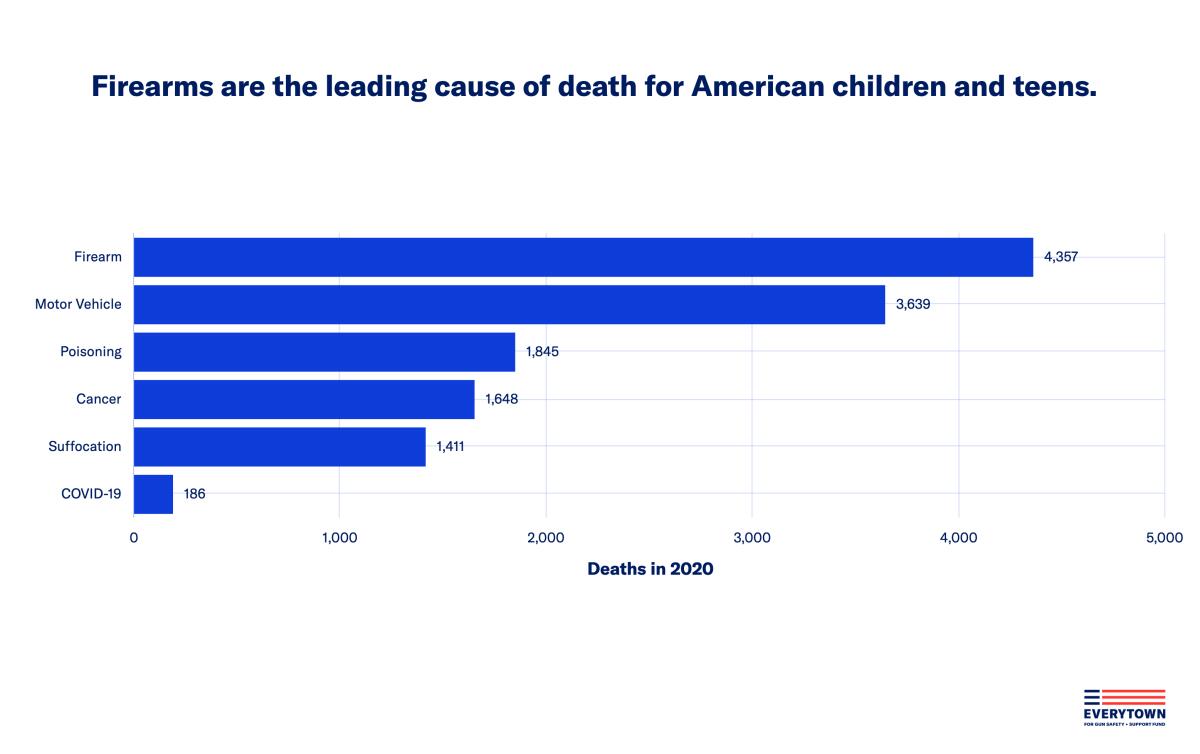
In his majority opinion, Judge Ryan D. Nelson, a Trump appointee, wrote that the ban, coupled with an existing ban on handgun sales to youths, left young adults with only the option of using shotguns to protect themselves in the home.
Unfortunately, he wrote, “shotguns are outmatched by semiautomatic rifles in some situations. Semiautomatic rifles are able to defeat modern body armor, have a much longer range than shotguns and are more effective in protecting roaming kids on large homesteads, are much more precise and capable at preventing collateral damage, and are typically easier for small young adults to use and handle.”
One would think from these words — in which fellow Trump appointee Kenneth K. Lee concurred — that America is still a land of frontier lawlessness in which children roaming in the wild need to be constantly protected by covering fire.
A Texas federal judge was inundated Thursday with friend-of-the-court briefs urging him to reject a lawsuit by Texas and 19 other red states asserting that the Affordable Care Act is unconstitutional.
Indeed, Nelson grounded his endorsement of gun rights for 18- to 21-year olds by evoking the 2nd Amendment’s grounding in the colonial tradition of citizen militias, which frequently enlisted youths as young as 15.
But he didn’t seem to absorb the implications of his own observation that members of those early militias were “required to meet regularly for weapons inspection and registration,” a requirement that doesn’t exist in the modern context.
The rulings by Benitez and the appellate judges are the “predictable consequences of a long-term effort to move the judiciary to the right,” Wintemute says. Overhanging all state gun regulations is a pending decision in a New York 2nd Amendment case by the U.S. Supreme Court.
The prospect that the court might expand the reach of the 2nd Amendment even beyond the boundaries set by the late Justice Antonin Scalia in the so-called Heller decision of 2008 has stymied legal initiatives at the state level. California’s intention to appeal the appellate decision on semiautomatic weapons to the full 9th Circuit court is on hold pending the Supreme Court’s decision, according to legal authorities.
What animates these rulings, along with much of the rhetoric about home defense purveyed by gun advocates, is the impression that American families and homes are threatened by unrelenting violence. The raw numbers don’t support that notion — indeed, the data contradict it.
According to FBI statistics, the rate of violent crime has been dropping continuously for at least three decades, from 747 reported cases per 100,000 people in 1993 to 379.4 in 2020. The murder rate has fallen from 5.5 per 100,000 in 2000 to 5.0 in 2020; the property crime rate, including burglary, larceny and motor vehicle theft, has fallen from about 3,618 cases per 100,000 in 2000 to about 2,110 in 2020.
Where does the impression of a nation under siege originate? In the gun lobby and among politicians who cynically foment fear among voters to gin up support for their policies and candidacies.
“Today is that terrible day you pray never comes,” Sen.
“America has drunk the Kool-Aid that says your home is safer with a gun in it than without it,” Wintemute says. “But it’s crystal clear that having a gun in the home strongly increases the likelihood that someone will die there.”
That’s particularly true for children and teens, for whom firearms are now the leading cause of death, outstripping vehicular accidents, poisoning and cancer.
Suicide rates by firearm are eight times as high among male handgun owners than nonowners, according to a 2020 study by Stanford University researchers, and 35 times as high among female gun owners than nonowners.
Self-defense is an illusion, according to another study, which reported that “guns kept in homes are more likely to be involved in a fatal or nonfatal accidental shooting, criminal assault, or suicide attempt than to be used to injure or kill in self-defense.”
The greatest obstacle to enacting gun laws to quell America’s epidemic of gun violence may be the assumption that nothing works, promoted by those who think the best solution to the murders of schoolchildren is inaction.
After Uvalde, Texas Gov. Greg Abbott defended his own loosening of gun restrictions in his state by remarking, “There are ‘real gun laws’ in Chicago. There are ‘real gun laws’ in NY. There are real gun laws in California...[T]here are more people who were shot every weekend in Chicago than ... in schools in TX.”
No politician who thinks like this should be allowed anywhere near a microphone, because the words Abbott uttered were nothing but justification for murder. The truth is that the “real gun laws” in California have made Californians safer in their homes, workplaces and public gatherings than Texans. Does anything else matter more?
More to Read
Get the latest from Michael Hiltzik
Commentary on economics and more from a Pulitzer Prize winner.
You may occasionally receive promotional content from the Los Angeles Times.

